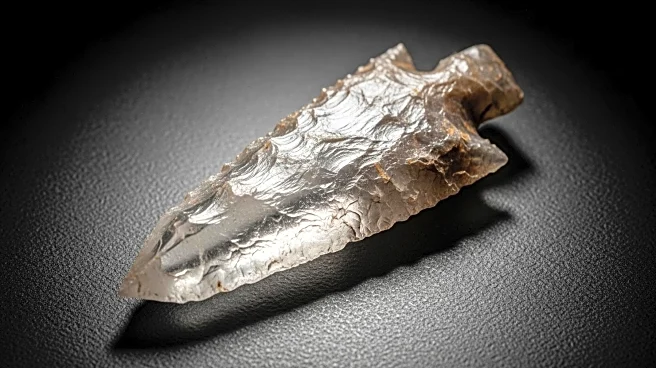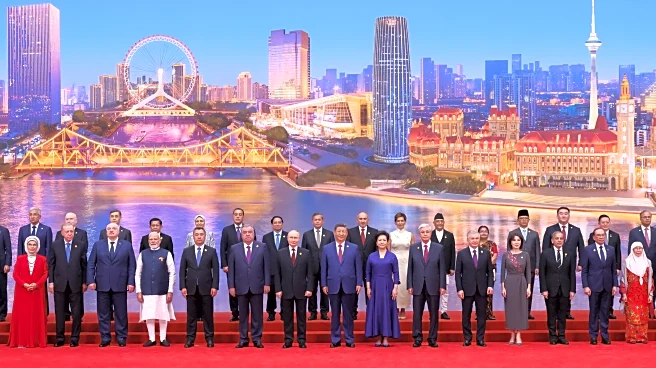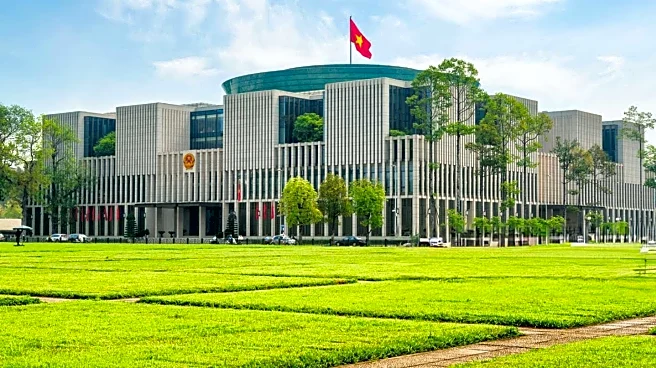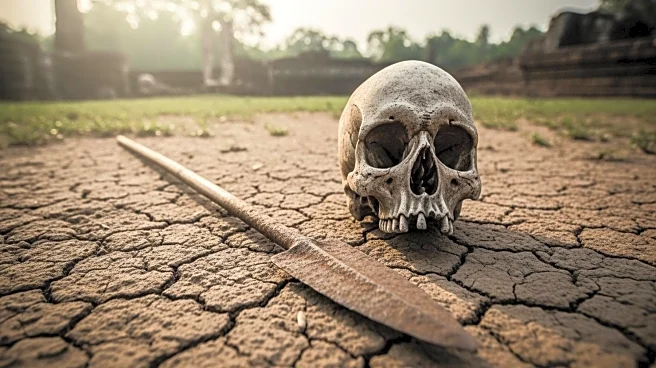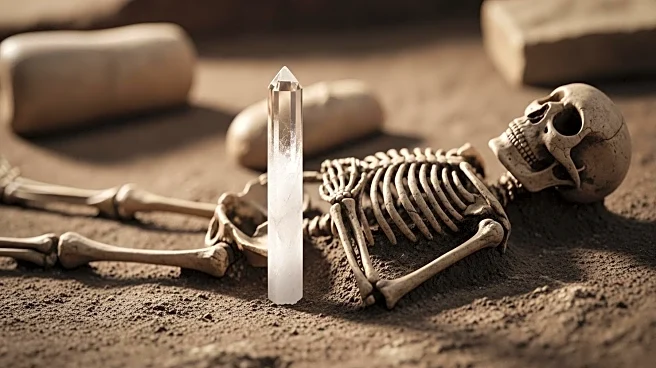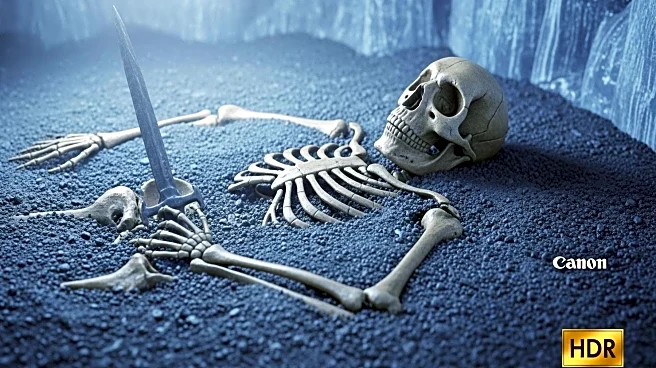What's Happening?
A human skeleton dating back approximately 12,000 years has been excavated in Vietnam, revealing the oldest human mitochondrial DNA found in the region. The man, who died at around 35 years old, was pierced in the neck by a projectile with a quartz tip, leading to a fatal infection. The injury suggests a small, fast-moving object caused the damage, and the man may have lived for months after being wounded. This discovery provides rare insight into the lives of people in Southeast Asia during the late Pleistocene era. The study, published in the Proceedings of the Royal Society B, suggests this may be the earliest evidence of conflict between hunter-gatherers in the region.
Why It's Important?
The discovery of the skeleton offers significant insights into the interactions and conflicts among hunter-gatherer populations in Southeast Asia during the Pleistocene era. The presence of a quartz-tipped tool, potentially from a different population, raises questions about the nature of violence and technological exchange between groups. This find contributes to the limited examples of interpersonal violence from this period, enhancing understanding of social dynamics and survival strategies in ancient human societies. The study also highlights the importance of preserving and analyzing skeletal remains to reconstruct historical human behavior and migration patterns.
What's Next?
Further archaeological work at the site and in the region is necessary to fully understand the circumstances surrounding the man's death. Researchers aim to explore the possibility of violence between different populations and the technological origins of the quartz tool. Continued excavation and analysis may uncover more evidence of interactions between ancient communities, providing a clearer picture of social structures and conflicts during the Pleistocene era.
Beyond the Headlines
The study raises ethical considerations regarding the interpretation of ancient human remains and the narratives constructed around them. It also prompts discussions on the preservation of cultural heritage sites and the role of international collaboration in archaeological research. The findings may influence future studies on the evolution of human societies and the impact of environmental changes on ancient populations.
